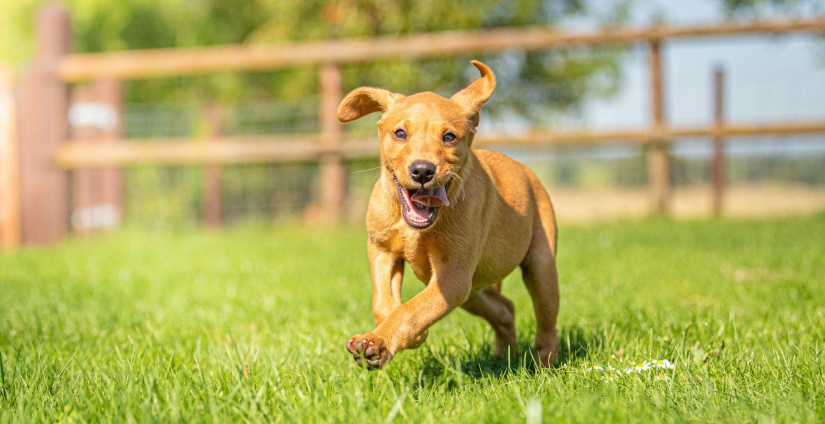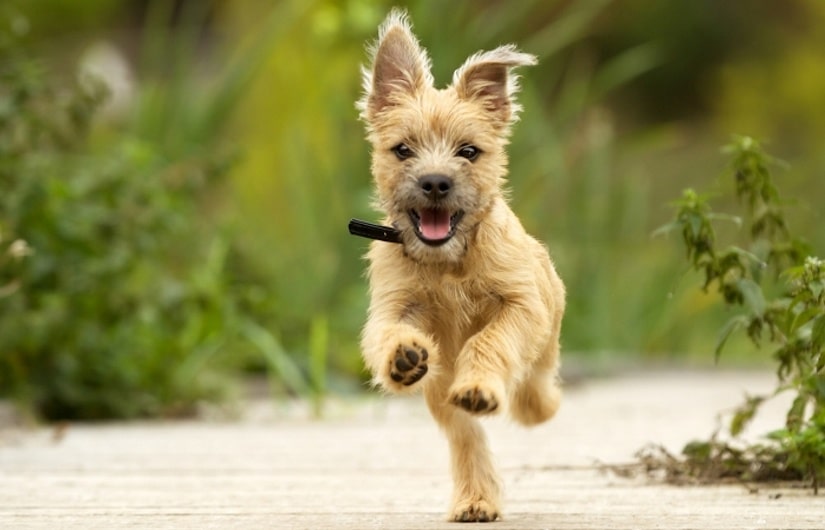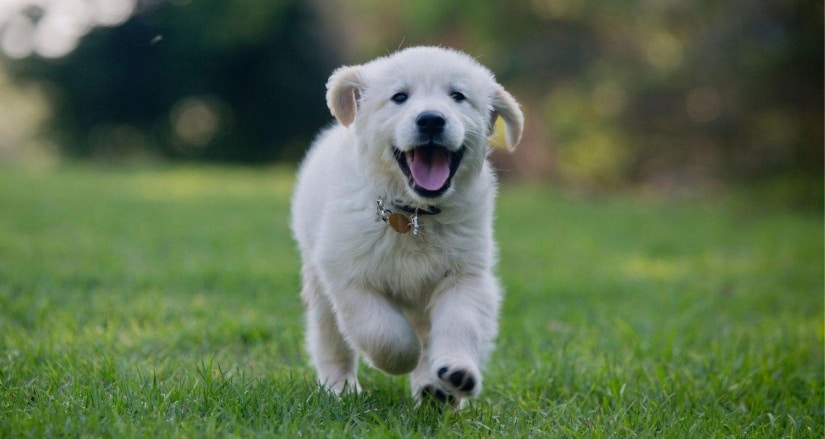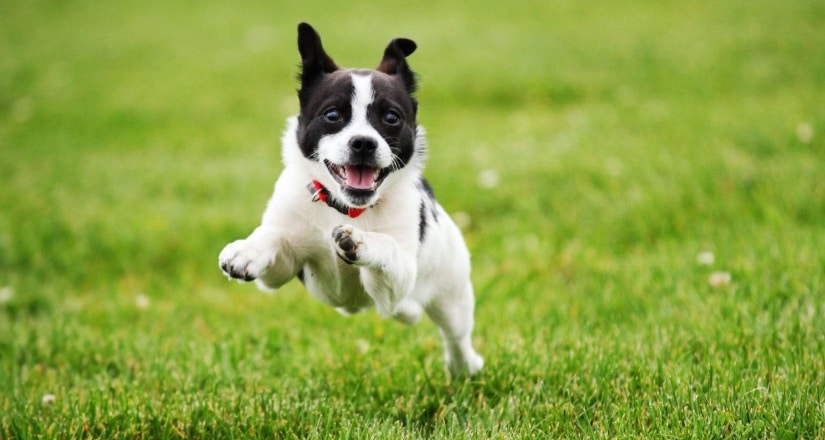Have you ever noticed your dog suddenly running around the house like a maniac after a walk? Maybe they dart back and forth, spin in circles, or jump on the furniture. This behavior is known as dog “zoomies” or frenetic random activity periods (FRAPs). It’s different from normal playtime, as it’s more frantic and repetitive.
Zoomies can happen at any time, but they are especially common after walks, baths, or grooming sessions. Why do dogs get the zoomies after a walk? And how can you calm them down? In this article, we’ll explore the reasons behind this quirky behavior and give you some tips on how to help your dog relax and settle down after a walk.
What are the Zoomies?
The zoomies are a natural canine behavior that serves a purpose: to release pent-up energy. Dogs may get the zoomies when they are feeling happy, excited, or relieved. They may also do it to warm up after being cold or wet, or to act on their primal instincts.
The zoomies are not a sign of aggression or hyperactivity. They are simply a way for dogs to express themselves and have some fun.
Most dogs experience the zoomies at some point in their lives, especially puppies and young dogs who have more energy to burn than older dogs.
However, some breeds may be more prone to the zoomies than others, such as terriers, herding dogs, and sighthounds
Dr. Pamela J. Perry, behavior resident at the College of Veterinary Medicine, Cornell University says: “Although FRAPs are normal, a dog zooming around the house or yard may be in danger of injuring themselves (or breaking something). Owners should keep zooming dogs away from stairs, slippery floors, obstacles and the road.”
Common Triggers for the Zoomies in Dogs:
There are many situations that can trigger the zoomies in dogs. Some of the most common ones are:
- After a walk: Dogs may get the zoomies after a walk to celebrate a feel-good moment or to warm up after being outside.
- After a bath: Dogs may get the zoomies after a bath to release tension and anxiety from being wet or groomed.
- After pooping: Dogs may get the zoomies after pooping to celebrate unloading something major or to escape from any poop stuck to them.
- After playing: Dogs may get the zoomies after playing with other dogs or humans to express excitement and joy.
- In the morning or evening: Dogs may get the zoomies in the morning or evening when they have more energy or when they are anticipating something exciting like food or attention.
Reasons Why Dogs Go Crazy After a Walk
Dogs get the zoomies after a walk for various reasons. Here are some of the most common ones
As mentioned, by Stephanie Gibeault, MSc, CPDT on AKC, “Given that zoomies are a way for dogs to get their energy out, they often happen first thing in the morning after dogs have rested all night. They can also happen later in the day for dogs that have been confined in a crate or haven’t been walked.”

Excitement
One possible reason why your dog goes crazy after a walk is that they are excited by something they encountered during the walk. It could be another dog, a squirrel, a ball, or anything else that stimulates their senses and triggers their natural instincts.
Dogs are curious and playful animals, and they love to explore and chase things in their environment. When they do something fun or exciting, they release endorphins and adrenaline, which make them feel happy and energetic.
Sometimes, this energy can spill over into zoomies when they get home.
Happiness
Another possible reason why your dog goes crazy after a walk is that they are happy to be home. Dogs are social animals, and they bond strongly with their owners and their home.
After a long walk, they may feel relieved and joyful to be back in their familiar and comfortable surroundings. They may also want to show you how much they appreciate you for taking them out and spending time with them. By running around and acting silly, they are expressing their happiness and gratitude.

Energy
A third possible reason why your dog goes crazy after a walk is that they still have excess energy to burn. This is especially common in young puppies or high-energy breeds that need a lot of physical activity to stay healthy and balanced.
If your walk was too short or too slow for your dog’s needs, they may not have gotten enough exercise to tire them out. As a result, they may still feel restless and bored when they get home, and resort to zoomies as a way to release their pent-up energy.
Renee Rhoades, Head Behavior Consultant at R+Dogs says: “If your dog exhibits zoomies frequently or at inopportune times (such as when you are asleep), they may be telling you that they need more exercise and mental stimulation
Frustration
A fourth possible reason why your dog goes crazy after a walk is that they are frustrated that the walk has ended. This may happen if you don’t take your dog out for walks often enough, or if you cut the walk short for some reason.
Your dog may love being outside so much that they don’t want the walk to end. They may feel disappointed or annoyed that they have to go back inside, where there is less stimulation and freedom.
By going crazy after a walk, they are showing their dissatisfaction and protest.
Emotions
A fifth possible reason why your dog goes crazy after a walk is that they are responding to your emotions or behavior. Dogs are very good at sensing their owner’s mood and attitude, and they often mirror them.
If you are feeling happy or playful after a walk, your dog may pick up on that and join in the fun. If you start playing with your dog on your way home, you may also trigger their zoomies by adding an emotional burst of energy.
How to Calm Your Dog Down After a Walk
Zoomies are usually harmless and normal behavior for dogs, as long as they don’t cause any damage or injury to themselves or others. However, if you find them annoying or disruptive, there are some things you can do to calm your dog down after a walk. Here are some tips:
Provide your dog with toys, chews, or puzzles
One way to calm your dog down after a walk is to give them something else to focus on and keep them busy. You can provide them with toys, chews, or puzzles that will stimulate their mind and satisfy their chewing instincts. This will help them release their excess energy in a more constructive way, and also prevent them from getting bored or destructive.
Give your dog some water and a treat
Another way to calm your dog down after a walk is to give them some water and a treat. This will help them hydrate and replenish their energy after a long walk, and also reward them for being good. It will also encourage them to rest and relax, as they will associate getting home with getting something nice.

Use calming signals
A third way to calm your dog down after a walk is to use calming signals. These are body language cues that dogs use to communicate with each other and with humans.
They include yawning, blinking, turning away, licking lips, and lying down. By using these signals, you can tell your dog that you are not interested in playing and that you want them to calm down. Your dog will likely understand and respect your message, and follow your lead.
Ignore your dog’s zoomies
A fourth way to calm your dog down after a walk is to ignore their zoomies. Sometimes, the best thing to do is to let your dog run it off and wait for them to stop on their own. If you pay attention to their zoomies, you may inadvertently reinforce them by giving them the attention they crave. By ignoring them, you are showing them that their behavior is not getting them what they want, and that it’s not worth doing.
Avoid overstimulating your dog
A fifth way to calm your dog down after a walk is to avoid overstimulating them. This means avoiding loud noises, bright lights, or sudden movements that may trigger their zoomies.
You should also avoid playing with them or getting them excited right before or after a walk. Instead, you should keep things calm and quiet, and let your dog wind down gradually.
Increase the frequency, duration, or intensity of your walks
A sixth way to calm your dog down after a walk is to increase the frequency, duration, or intensity of your walks. This will help your dog get enough exercise and stimulation to meet their physical and mental needs.
It will also reduce their chances of getting bored, restless, or frustrated at home. By giving your dog more opportunities to be outside and active, you will make them happier and healthier, and less likely to get the zoomies.
Well, That’s a Wrap
Zoomies are a common and normal behavior for dogs, especially after a walk. They can be caused by various reasons, such as excitement, happiness, energy, frustration, or emotions.
While zoomies are usually harmless and fun, they can also be annoying or disruptive for some owners. If you want to calm your dog down after a walk, you can try some of the tips we shared above, such as providing them with toys, chews, or puzzles, giving them some water and a treat, using calming signals, ignoring their zoomies, avoiding overstimulating them, or increasing the frequency, duration, or intensity of your walks.
By understanding your dog’s behavior and providing them with appropriate outlets for their energy, you can improve your relationship with your furry friend and enjoy more peaceful and pleasant walks together.
